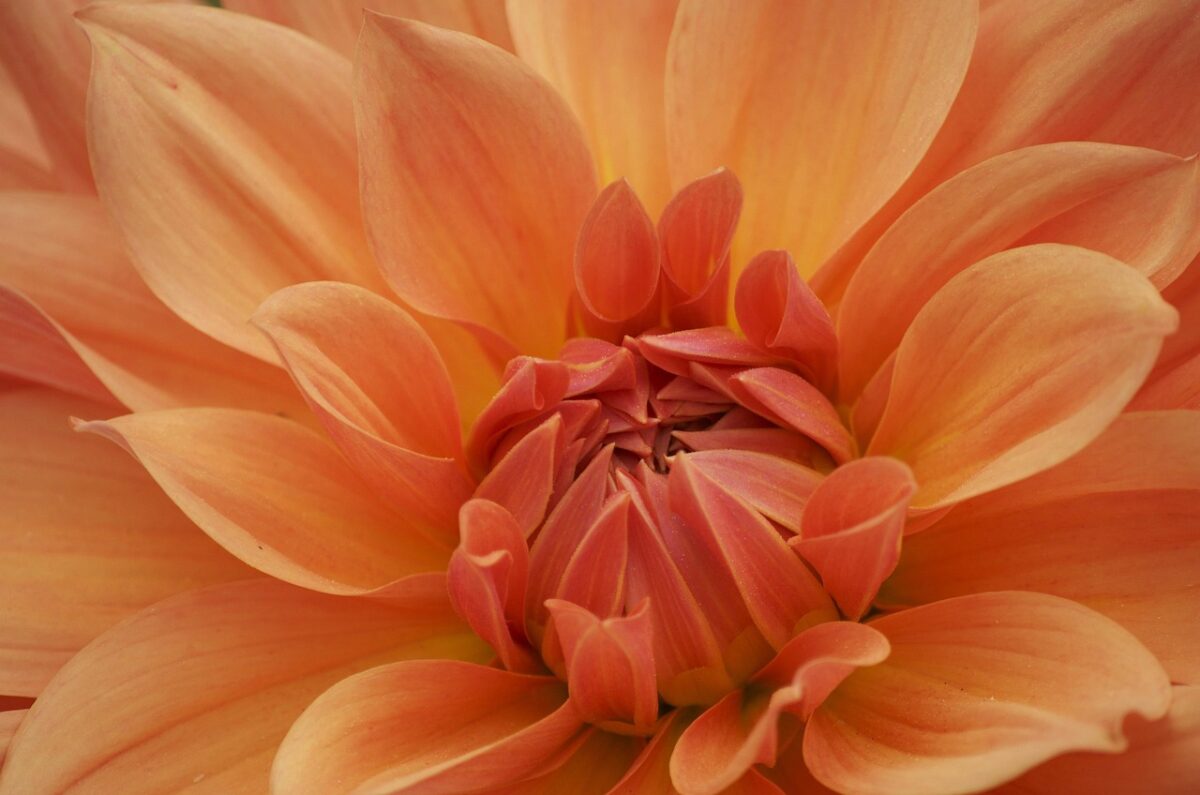Orange flowers bring a burst of warmth and vibrancy to any garden, making them a popular choice among home gardeners and landscape designers alike. Their cheerful hues can brighten up borders, attract pollinators, and create stunning focal points. Whether you’re a beginner or a seasoned gardening enthusiast, incorporating orange flowering plants into your landscape can add depth and character. In this guide, we’ll explore the best orange flowering plants, how to care for them, and creative ways to design your garden with these eye-catching blooms.
Orange flowers are not just visually appealing; they also serve various purposes in the garden. Here are some compelling reasons to consider them:
- Attract Pollinators: Many orange blooms are known to attract bees, butterflies, and hummingbirds, enhancing the biodiversity of your garden.
- Seasonal Interest: With a variety of bloom times, orange flowering plants can provide color from spring through fall.
- Contrast and Harmony: Orange flowers pair beautifully with other colors, especially blues, purples, and greens, creating a vibrant landscape.
- Symbolism: Orange is often associated with enthusiasm, creativity, and warmth, making it a perfect choice for inviting spaces.
Top 15 Plants with Orange Flowers
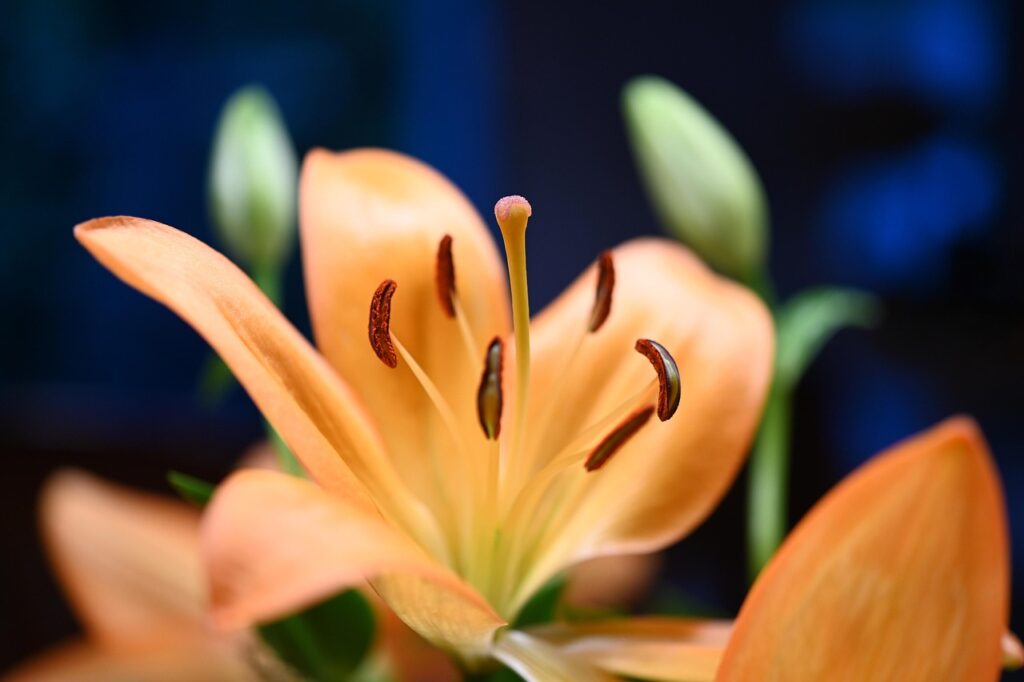
Here’s a detailed look at 15 outdoor orange-flowering plants that can enhance your garden:
1. Marigold (Tagetes spp.)
Bloom Time: Spring to frost
Ideal Zones: 2-11
Marigolds are hardy annuals that produce vibrant orange blooms. They thrive in full sun and well-drained soil. Regular deadheading encourages continuous blooming throughout the season.
2. Tiger Lily (Lilium lancifolium)
Bloom Time: Summer
Ideal Zones: 3-9
This perennial is known for its striking orange flowers with dark spots. Tiger lilies prefer well-drained soil and partial to full sun. They are drought-tolerant once established.
3. California Poppy (Eschscholzia californica)
Bloom Time: Spring to summer
Ideal Zones: 5-10
These hardy annuals produce bright orange flowers and thrive in poor soil. They require full sun and minimal water, making them low-maintenance.
4. Orange Coneflower (Rudbeckia fulgida ‘Goldsturm’)
Bloom Time: Summer to fall
Ideal Zones: 3-9
Known for its daisy-like appearance, this perennial attracts butterflies and is drought-resistant. It thrives in full sun and well-drained soil.
5. Daylily (Hemerocallis spp.)
Bloom Time: Late spring to summer
Ideal Zones: 3-9
Daylilies are versatile perennials that come in many shades of orange. They are tolerant of drought and can thrive in various soil types.
6. Canna Lily (Canna indica)
Bloom Time: Summer to fall
Ideal Zones: 7-11
With large, tropical leaves and striking orange flowers, Cannas prefer full sun and moist soil. They can be grown in containers or garden beds.
7. Orange Zinnia (Zinnia elegans)
Bloom Time: Summer to fall
Ideal Zones: 3-10
Zinnias are easy to grow and thrive in full sun. They attract butterflies and bloom continuously with regular deadheading.
8. Flame Acanthus (Anisacanthus quadrifidus var. wrightii)
Bloom Time: Summer to fall
Ideal Zones: 7-11
This drought-tolerant perennial produces tubular orange flowers that attract hummingbirds. It prefers full sun and well-drained soil.
9. Orange Trumpet Vine (Campsis radicans)
Bloom Time: Summer
Ideal Zones: 4-9
Known for its climbing nature, this vine produces trumpet-shaped flowers that attract hummingbirds. It thrives in full sun and can tolerate a variety of soil types.
10. Mexican Sunflower (Tithonia rotundifolia)
Bloom Time: Summer to fall
Ideal Zones: 3-10
This annual produces bright orange flowers and attracts butterflies. It prefers full sun and well-drained soil.
11. Orange Cosmos (Cosmos sulphureus)
Bloom Time: Summer to fall
Ideal Zones: 2-11
Cosmos are easy to grow and thrive in poor soil. They bloom continuously and attract pollinators, preferring full sun.
12. Butterfly Weed (Asclepias tuberosa)
Bloom Time: Summer
Ideal Zones: 3-9
This perennial is essential for monarch butterflies and produces clusters of orange flowers. It prefers well-drained soil and full sun.
13. Orange Bellflower (Campanula medium)
Bloom Time: Summer
Ideal Zones: 3-8
This perennial features bell-shaped orange flowers and thrives in well-drained soil and partial shade.
14. Orange Foxglove (Digitalis purpurea)
Bloom Time: Early summer
Ideal Zones: 4-9
Foxgloves are biennials that add vertical interest to gardens. They prefer partial shade and well-drained soil.
15. Orange Salvia (Salvia splendens)
Bloom Time: Summer to fall
Ideal Zones: 10-11
This annual is known for its vibrant, tubular flowers and attracts hummingbirds. It thrives in full sun and well-drained soil.
Indoor Orange Flowering Plants

For those looking to add a touch of orange indoors, consider these five options:
1. African Violet (Saintpaulia)
Bloom Time: Year-round
Ideal Zones: 10-11
These charming houseplants are available in various colors, including orange. They thrive in bright, indirect light and prefer moist soil.
2. Kalanchoe (Kalanchoe blossfeldiana)
Bloom Time: Winter to spring
Ideal Zones: 10-11
Kalanchoe is a succulent that produces clusters of small orange flowers. It requires bright light and should be watered only when the soil is dry.
3. Orchid (Phalaenopsis spp.)
Bloom Time: Year-round
Ideal Zones: 10-12
Orchids can produce stunning orange blooms and thrive in bright, indirect light. Water when the potting medium is almost dry.
4. Bromeliad (Guzmania spp.)
Bloom Time: Year-round
Ideal Zones: 10-11
These tropical plants produce vibrant orange flowers and prefer bright, indirect light and high humidity.
5. Gerbera Daisy (Gerbera jamesonii)
Bloom Time: Year-round
Ideal Zones: 10-11
Gerbera daisies are cheerful houseplants that thrive in bright light. They prefer well-drained soil and should be watered when the top inch is dry.
How to Grow and Care for Orange Flowering Plants
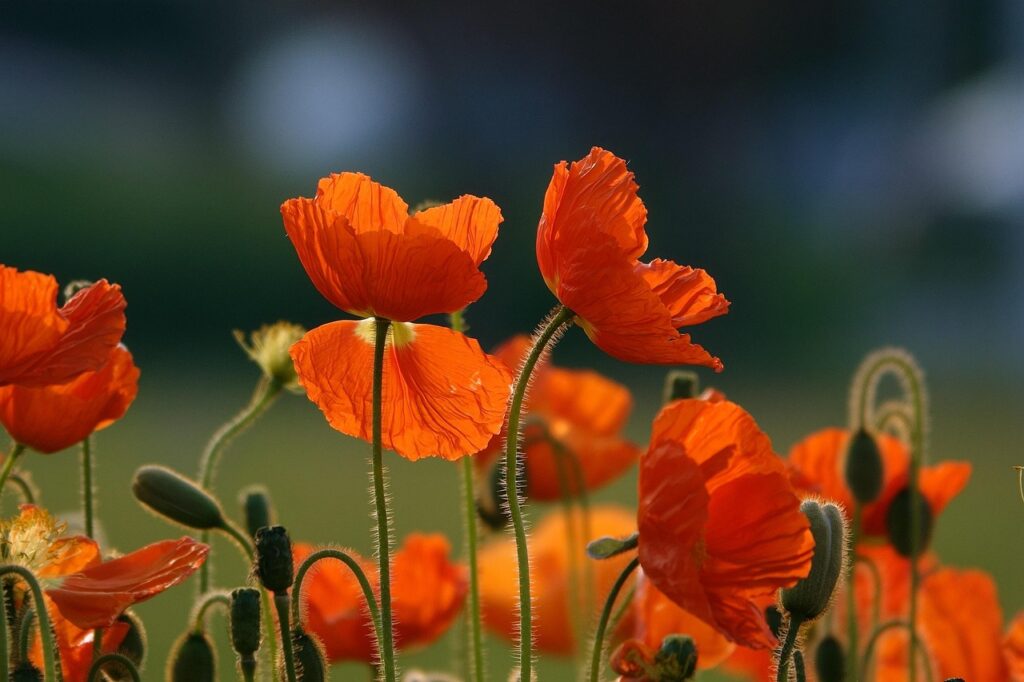
Growing orange flowering plants requires understanding their specific needs. Here’s a general care guide:
Soil Requirements
Most orange flowering plants prefer well-drained soil. A mix of potting soil, compost, and perlite can provide the necessary drainage and nutrients.
Light Conditions
Most orange blooms thrive in full sun, requiring at least 6 hours of direct sunlight daily. Some plants, like foxgloves, prefer partial shade.
Watering Practices
Watering needs vary among plants, but a general rule is to water when the top inch of soil feels dry. Avoid overwatering, which can lead to root rot.
Fertilization
Use a balanced, slow-release fertilizer during the growing season to promote healthy blooms. Follow package instructions for application rates.
Seasonal Care Checklist for Orange Blooms
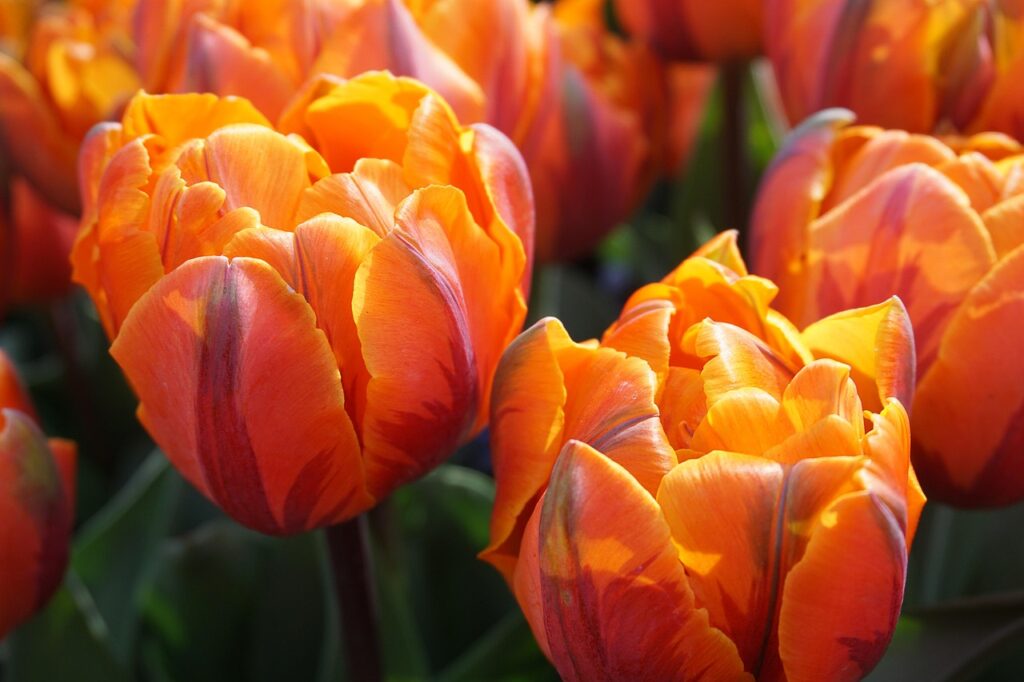
To ensure your orange flowering plants thrive, follow this seasonal maintenance checklist:
Spring
- Prepare soil by adding compost.
- Start planting annuals after the last frost.
- Prune perennials to encourage new growth.
Summer
- Water regularly, especially in dry spells.
- Deadhead spent flowers to promote further blooming.
- Check for pests and treat as necessary.
Fall
- Cut back perennials after the first frost.
- Mulch around plants to protect roots over winter.
- Gather seeds from annuals for next year.
Winter
- Bring indoor plants inside before frost.
- Reduce watering for dormant plants.
- Plan for next season’s garden layout.
Common Problems: Pests, Diseases, and Solutions
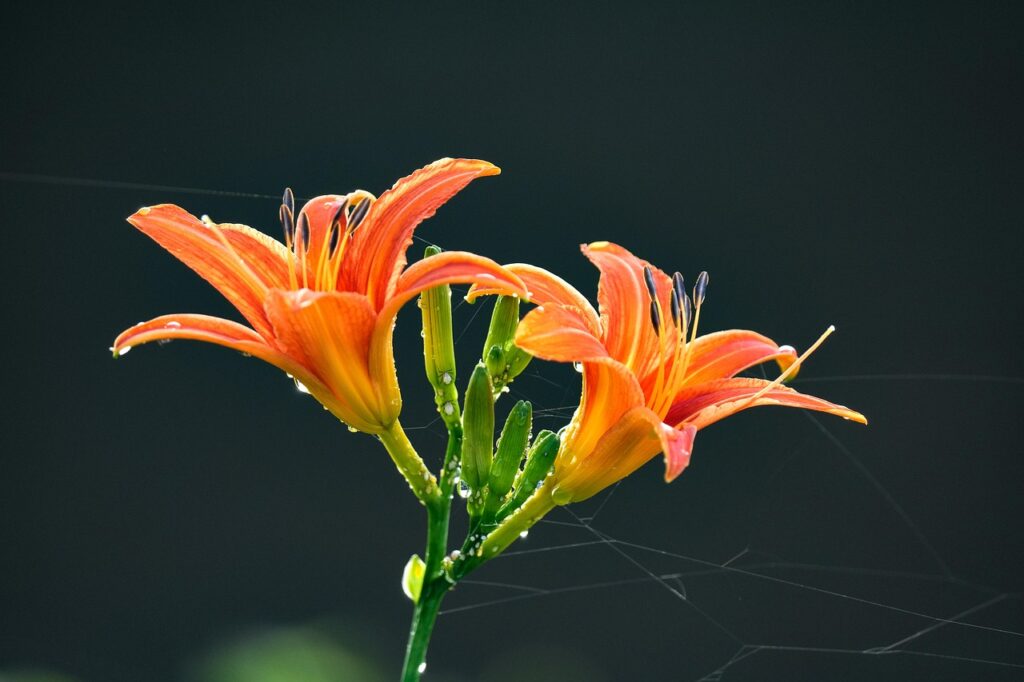
Even the most diligent gardeners encounter issues. Here’s a troubleshooting guide for common problems:
Pests
- Aphids: These small insects suck sap from plants. Spray with insecticidal soap or neem oil.
- Spider Mites: Look for webbing on plants. Increase humidity and spray with water or insecticidal soap.
Diseases
- Powdery Mildew: This fungal disease appears as a white powdery substance. Improve air circulation and apply fungicide if necessary.
- Root Rot: Caused by overwatering. Ensure good drainage and adjust watering habits.
Essential Tools and Safety Tips for Planting Orange Flowers
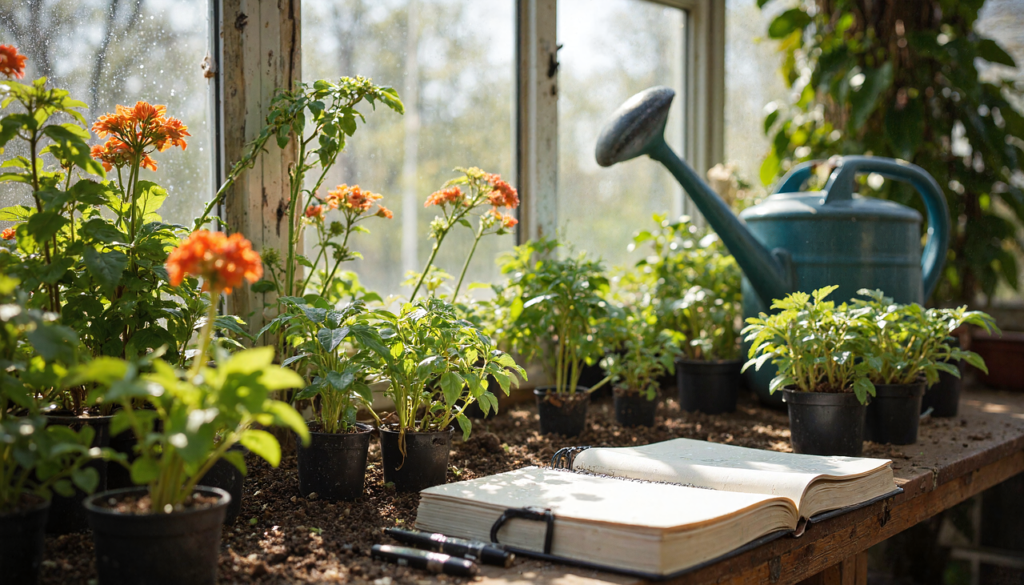
Having the right tools can make planting and caring for your orange flowers much easier:
- Garden Trowel: Essential for digging and planting.
- Pruning Shears: For deadheading and shaping plants.
- Watering Can: Useful for targeted watering.
- Gloves: Protect your hands while gardening.
- Rake: Helps in soil preparation and debris removal.
When handling plants, always check for pet toxicity. Some plants may be harmful to pets, so research before introducing new varieties into your garden.
Design Ideas: Using Orange Flowers in Your Landscape

Incorporating orange flowers into your landscape can create stunning visual effects. Here are some design ideas:
- Color Blocking: Use orange flowers in blocks for a bold statement against green foliage.
- Contrasting Combinations: Pair orange blooms with blue or purple flowers for a striking contrast.
- Layering Heights: Combine tall plants like hollyhocks with shorter zinnias to create depth.
- Pathways and Borders: Line pathways with orange flowering plants to guide visitors through your garden.
By thoughtfully incorporating these vibrant plants into your landscape, you can create an inviting and lively garden space that showcases the beauty of orange blooms.
